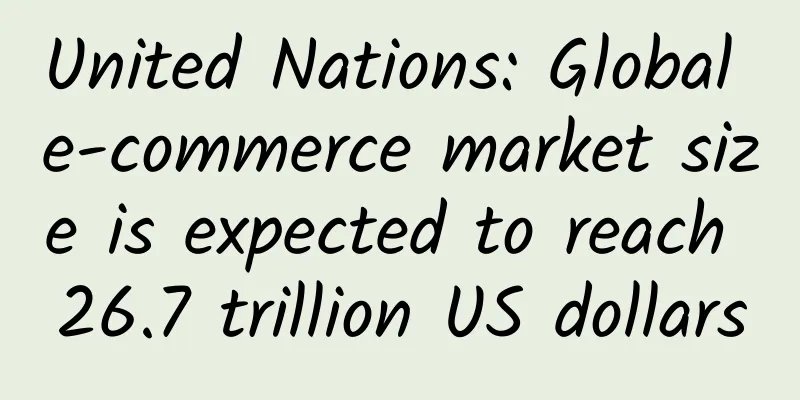United Nations: Global e-commerce market size is expected to reach 26.7 trillion US dollars

|
For the past quarter century, the rapid rise of the digital economy has been unencumbered by tariffs, as trade in physical goods has been. But that era may come to an abrupt end this week as some countries threaten to break an international ban on digital tariffs, changing the rules of the game in an effort to extract more revenue from a global e-commerce market estimated by the United Nations at $26.7 trillion. If governments fail to reapprove a World Trade Organization moratorium on e-commerce tariffs, it could open a new regulatory mess that would raise prices for consumers to shop on Amazon, watch movies on Netflix, listen to Apple Music and play games on Sony PlayStation across borders. “Without decisive action in the coming days, trade diplomats risk inadvertently undermining the internet as we know it today,” John Denton, secretary general of the International Chamber of Commerce, said in an opinion piece in The Hill last week. E-commerce tariffs The WTO’s e-commerce agenda dates back to 1998, when countries agreed to avoid taxing the fledgling digital trade market. WTO members have regularly renewed the moratorium at biennial ministerial meetings; this week in Geneva, they will consider whether to extend it again. But countries such as India and South Africa believe that the growth of the Internet warrants a rethink on whether the WTO's moratorium on e-commerce tariffs is in their economic interests. In 2020, they issued a report saying that the ban prevented developing countries from earning tariff revenues from innovative technologies such as 3D printing, big data analysis and artificial intelligence. The Paris-based OECD said digital tariffs could generate annual tariff revenue of between $280 million and $8.2 billion, but would also hurt global growth by reducing economic output and productivity. The International Monetary Fund has previously calculated that the fragmentation of the digital economy could ultimately lead to a 6% reduction in global economic output over the next decade. John Neuffer, chief executive of the Semiconductor Industry Association, said that if the tariff moratorium was abandoned, it could trigger a race to impose tariffs, putting unnecessary pressure on the battered global economy and sending a signal to the world that inflation is doomed. From Global Market Report |
>>: China Payment and Clearing Association: 2022 China Payment Industry Annual Report
Recommend
Mayflies collectively "attack" the bridge, is it a sign of disaster or serious pollution?
Tuchong Creative Recently (September 2024), a gro...
Year-end review: Interpretation of the top ten domestic technology news in 2021
The year of 2021, with its climaxes one after ano...
The efficacy and function of yellow back grass
Modern medical research believes that yellow-back...
The efficacy and function of Yichang stair grass
Yichang stair grass is a traditional Chinese medi...
International Seal Day丨Patting your belly and basking in the sun, I heard you want to have this kind of life
March 1st of each year is International Seal Day ...
The efficacy of rootless vine
The rootless vine is also called the headless vin...
Effects and functions of Croton leaves
Everyone is familiar with croton leaves, of cours...
The flatter the face, the cuter it is? Garfield cats and Pekingese dogs are more likely to get these diseases
Flat nose, big forehead, round and flat face as i...
The efficacy and function of turtle blood
Speaking of turtle blood, many people know that i...
What is the Chinese medicine formula for cleaning blood vessels throughout the body?
Many people do not pay attention to body conditio...
The efficacy and function of small flower sour vine
Speaking of the small-flowered sour vine, I belie...
What is the medicinal value of Phytolacca?
For most people, Phytolacca is just a common wild...
The evolution of the small hearing aid, a bridge connecting the hearing-impaired to the world of sound
"If I wear hearing aids, people will think I...
The efficacy and function of white ginseng
The main effect of white ginseng is to nourish th...
Why can't humans drink raw water, but animals drink it directly?
In nature documentaries, we often see this scene:...









